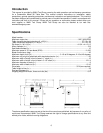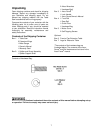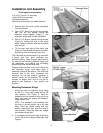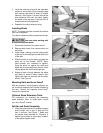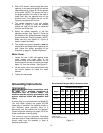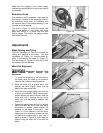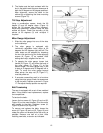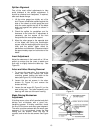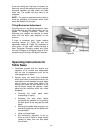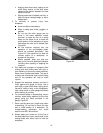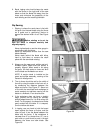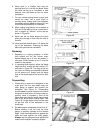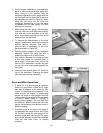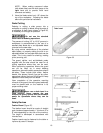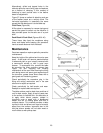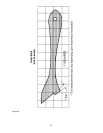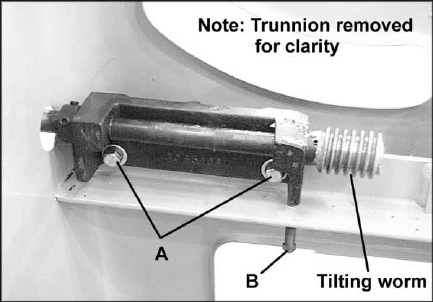
14
If the saw raising arm has been re-located, the
table may have to be realigned so as to provide
clearance between the saw blade and table
insert slot. The splitter will also have to be
realigned.
NOTE: The saw arm setscrew must be tight to
avoid the possibility of movement which could
cause the blade to hit the insert.
Tilting Mechanism Adjustment
If binding occurs in the tilting mechanism, clean
off the saw dust and pitch accumulation and re-
grease. If binding continues, check the
alignment and readjust as required to center
worm with the worm gear segment on the
trunnion.
If there is excessive play, loosen bracket
mounting screws (A, Figure 23) and turn
adjustment screw (B, Figure 23) clockwise to
raise pinion. A tight mesh without binding is
ideal. Re-tighten mounting screws and check
over the 90 degree to 45 degree range of tilt for
excessive play or binding. Re-adjust if required.
Operating Instructions for
Table Saws
1. Familiarize yourself with the location and
operation of all controls and adjustments
and the use of accessories such as the
miter gauge and rip fence.
2. Serious injury can result from kickbacks
which occur when a work piece binds on the
saw blade or binds between the saw blade
and rip fence or other fixed object. This
binding can cause the work piece to lift up
and be thrown toward the operator. Listed
below are the conditions which can cause
kickbacks:
• Confining the cutoff piece when
crosscutting or ripping.
• Releasing the work piece before
completing the operation or not pushing
the work piece all the way past the saw
blade.
• Not using the splitter when ripping or not
maintaining alignment of the splitter with
the saw blade.
• Using a dull saw blade.
• Not maintaining alignment of the rip
fence so that it tends to angle toward
instead of away from the saw blade
front to back.
Figure 23



